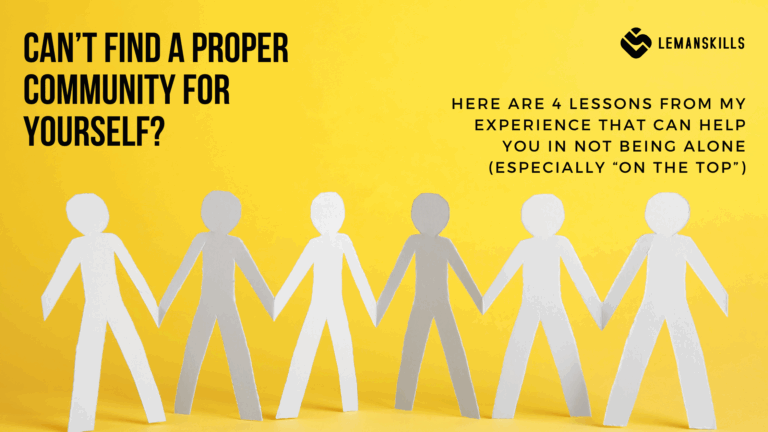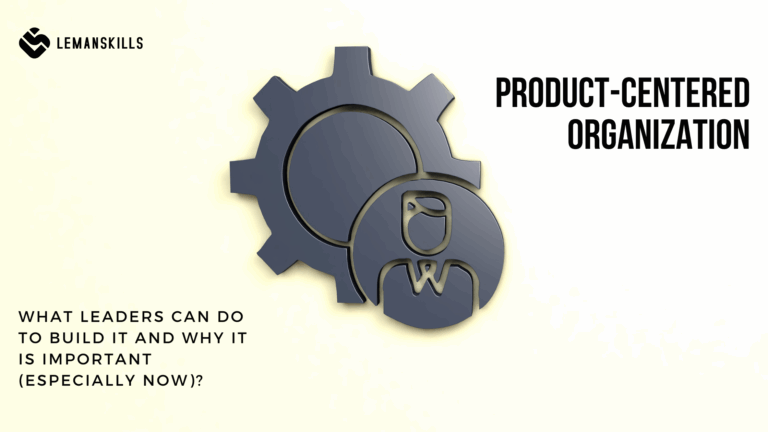Did you ever have a situation when you wanted to teach a person something? You explained everything, you put a lot of time and effort in it, and at the end of the day the person never learned anything? Or you gave somebody feedback because they didn’t do something correctly. And after the conversation it seemed that everything was okay, but after a couple of weeks or months the same mistake was done by the same person?
Did you start getting angry, feeling disappointed or guilty: is it you or is it all about them?
Were you persistent, sit with the person and explain the same thing 10 times? Or have you just decided to not bother anymore: since apparently this person doesn’t understand what you are saying?
How many cases ends like a failure when we think about teaching others effectively? 20%? 50%? More than that? And how many of them don’t say that they don’t understand because they don’t want to look or sound stupid?

What can we do to teach others better, so they can grow thanks to our knowledge and experience? And both sides don’t have the impression that they’ve wasted time on the doubtful effect?
Why doesn’t learning process work so often?
We can have the best intentions to teach others. In fact, most of the time we have those: we want people to be better in what they do, we share our knowledge, experience and what we’ve learned so far in a certain topic. Everything seems good in our head. The readiness to teach and an honest intention to do it is there.
Let’s say we are a buddy to the new employee. We want to onboard this person, take care of them, pass all information about how this organization works. To prepare a new joiner to understand the new environment, how everything gets done, so they don’t waste time and get stressed or frustrated of running around in circles, looking for the right person to answer their questions.
We have a plan, we start the process. We pass our knowledge, we teach the other person how to cover the goals we have as a team as well as possible. We check by asking: “do you have any questions?” or “is everything clear for you?”. And what is the answer on those two questions most of the time? 90% people goes with “no, all good, no questions”, “yes, all clear”. Is it your experience too?
And it’s clear until it isn’t. We explained everything, checked with new employee and this is it: they start to work on their own.
And there is one mistake. And then another one. We give feedback, all is clear again, they go and do the same mistake again. When we ask what they need to do it to have the result that we aim for, they say “nothing, all good”.
Sounds familiar?
Sometimes we teach, then we see that the work is not done with a result that we did contract for, we give feedback with an intention so next time it’s better. And it’s not better at all: sometimes it’s the same, or even worse. What is happening in between of this process, so the results are often so disappointing (for both sides)?
- We don’t match the way of teaching to the preferred way of learning of the person. Most of the time, we focus more on the process of how to teach, then the process of how other person learns. We take care of the materials, pretty decks, or other sources of knowledge. And we focus on the delivery. It’s great, don’t get me wrong! It’s amazing that we want to teach others, make them better. But knowing if the person learns from reading, visualizing, listening, or experiencing things is a crucial element of a successful teaching process. Don’t get mad that a person that doesn’t want to read things that you give them. It’s not about you, it’s about the medium. Tailor your way of teaching to the way of learning of the person that you teach. It’s a way of improving hugely the whole experience, for both of you.
- We don’t know the personality structure of the other person. When we don’t know who the person is from PCM’s perspective, we are robbing ourselves from the tools to communicate with them efficiently. When we are aware that we have a Thinker on the other side, we know that they need to meet a recognition of work and time structure psychological needs to be in contact. If the process and the way we teach is chaotic or disorganized, they are not going to learn (even if the slides are pretty). When we are aware that we have a Harmonizer on the other side, we know that we need to use a nourishing channel of communication (meaning, you need to be warm, caring, empathetic to the other person’s emotions). It will be completely different than with a Thinker, who needs a questioning channel of communication: we need to ask about what they think about something, to get in contact. It’s extremely important to know who is on the other side, so you can communicate (and teaching is a way of communication) the most efficient way.
- We ask wrong questions. Questions are amazing. It is one of the simples and yet, the most powerful tool that the world ever invented. But asking the right questions is a skill. When we ask, “do you have any questions?”, most of the people will answer “no”. Why? Because they don’t want to look stupid, or incapable to understand. It is natural that if we can choose, we prefer to look smart, not the other way around. But we also know that is a short-term strategy: if we don’t ask a question now, we are going to make mistakes and we’ll waste so much more time on finding the right way to do it later. Instead of asking “do you have any questions?”, ask “could you please tell me know did you understand what I’ve just said with your own words?”. Paraphrasing is a tool to check if a person understood what we’ve said, the way we aimed it – but for real, not only declaratively.
Who we need to be to teach others well?
There is a certain set of skills that people who want to be efficient and effective in how they teach others should have.
Based on my teaching (others) and learning (from others) perspective, I believe that those are a golden list of competencies that make a person amazing guide to transform work and life of people that are around them. And we do know that you don’t need to be a school or academic teacher to use them. We share knowledge in so many ways every day: we teach our colleagues at work, our kids at home, we share some tips and tricks with our friends or family members, we pass value to the members of our community. What do we need to do it in the best possible way?
- Communicating properly in terms of personality types. There is no one-size-fits-all solution when it comes to how we talk with others. We need to listen to what kind of wording the person uses, with what speed they talk or on what things they focus on in the conversation. It’s not about mapping everybody with a questionnaire: it’s about being mindful about all those details, so we can make a strong hypothesis and then tailor the way we communicate, so what we want to teach sticks.
- Listening openly and actively (whatever is needed). Open listening is just being there, all ears about what the other person is saying to us. Active listening is being more engaged with the process: ask questions, paraphrase to understand better, give feedback and recognition to the other person. Without listening there is a very small chance to teach someone effectively: if we only talk, we are becoming a lecturer. How will we know that the process works behaving that way?
- Adaptability. As mentioned above, there is no one-size-fits-all solution in terms of a way of communication. And there is the same situation with the way of teaching. Each person needs a different approach, and a great teacher understands it. Some of us has the freshest brains in the morning, some of us needs to wait until late evening to use the mind power the best. We have different learning preferences. It may seem super complex at the very beginning, but asking questions will support you to be aware of the most important things, and based on those, you prepare the tailored process of learning for a certain person. It’s worth the effort. And don’t marry your content: if what you’ve prepared is not working, change it. Exchange written sources with video. Exchange video with podcasts. Exchange all of those with a bootcamp where a person will have a chance to learn through experience. And remember: it’s not about you, it’s about the other person’s needs.
- Explaining clearly, fighting the curse of knowledge. It’s extremely hard to not be carried away by the curse of knowledge bias, especially when we are experts in any area, and we love what we do. But to teach effectively, we need to remember that we are there for the other person, not for ourselves. It might be one of the most important discoveries that people ever make. Explaining what there is to be taught by not using the big words, in a clear, understandable way is one of the most important skills of the person who wants to guide others. If you are not sure how to simplify the message, use AI support (by using the phrase like “explain the theory X to a 7-year-old”): it can help you to rewire your brain that has a certain way of thinking, to the simpler one. Important: simpler doesn’t mean treating people you teach like children (unless this is your target group). It is all about transparency, simplicity of message, using examples or stories to visualize the whole idea.
- Learning, every day. To be a great educator, we need to focus on our learning in the first place. The life-long learning value is something that is on the list of TOP 5 the most important things for those people who teach others. Being curious, having an open mind, trying things, making mistakes, and learning from them: that’s how we learn AND it’s how we teach others in a consequence of that. If we don’t have a growth mindset, how on Earth are we supposed to be efficient in teaching others?
The bottom line
When we teach others, we are there for them. It can be super hard to stop the need to show that we the smartest persons in the room, but we must do it to be effective at teaching others. Remembering that the process where we teach something is for our audience (even if it is a one person), makes us take a step or two back from time to time and reflect on the way we do it.
Is it for me, or for them? Where is my focus: on the process, or on the person? Do I care more about ticking all the boxes that I passed everything I had on the agenda, or I care about the change that I make in this person’s brain and heart?
These are the questions that I invite all of us to ask ourselves every time we teach something. It will make everything we do better, more effective and efficient, and: we will be satisfied with the job well done.




